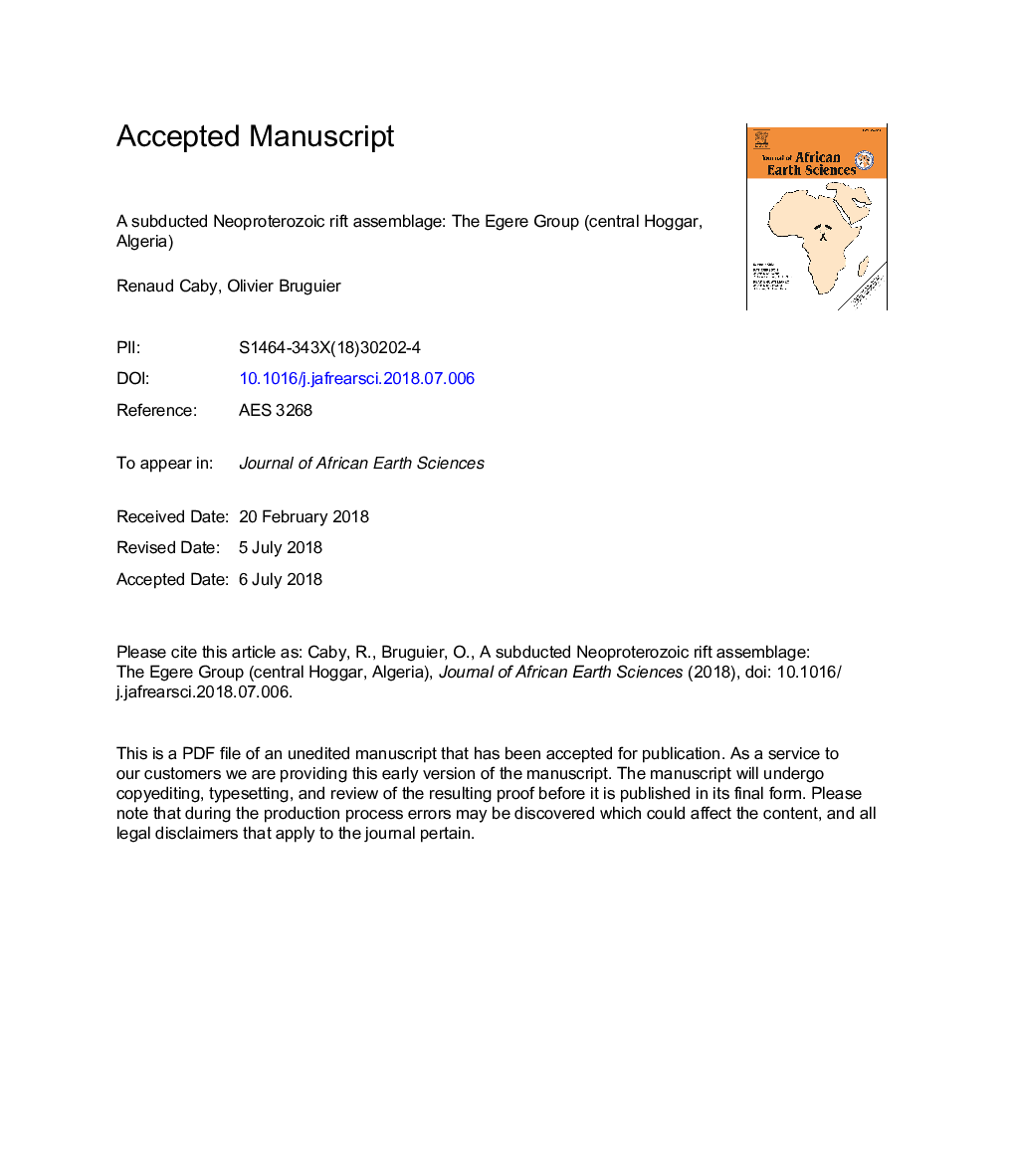| Article ID | Journal | Published Year | Pages | File Type |
|---|---|---|---|---|
| 8913400 | Journal of African Earth Sciences | 2018 | 37 Pages |
Abstract
The metasedimentary Egere Group (central Hoggar, Algeria) mainly comprises abundant marbles, metapelites, metaquartzites and mafic rocks, all affected by eclogitic metamorphism. Field relationships and pre-metamorphic features in the northern Egere region attest that most eclogites represent basaltic metatufs, metabasalts extruded during carbonate sedimentation and mafic sills. A slice of ultramafic rocks includes polymictic ultramafic sedimentary breccias containing blocks of marble, suggesting these represent a preserved piece of ocean-continent transition. Field observations, along with published metamorphic constraints and age determinations suggest that the Egere Group was deposited in a Neoproterozoic rift zone. Following peak eclogitic metamorphism (Tâ¯=â¯from 700 to 770â¯Â°C and P max. around 19â¯kbar after Doukkari et al., 2014), anatexis affected most rocks at decreasing pressure. Strong high-temperature ductile deformations, NW-verging folds and thrustings relate to exhumation of the lower crust assisted by viscous flow of anatectic domes. The location of the Egere eclogites and the similar age of pre-tectonic calc-alkaline plutons exposed west of the 4°50 fault in the Iskel terrane suggest that eclogitic metamorphism formed in a west-dipping subduction setting.
Keywords
Related Topics
Physical Sciences and Engineering
Earth and Planetary Sciences
Geology
Authors
Renaud Caby, Olivier Bruguier,
